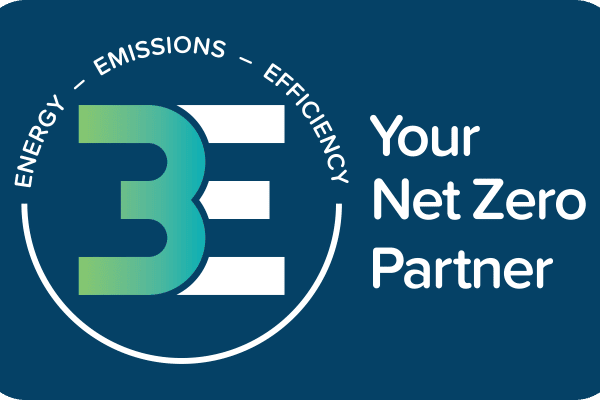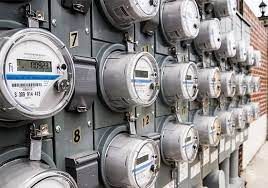The global pandemic’s impact on the country’s energy market was an opportunity and risk for most entrepreneurs. Many feared that electricity prices may rise due to the increase in demand, whilst others saw it as a chance to invest in energy-saving projects. It is good to note that wholesale electricity prices have been declining since the 3rd quarter of 2019. It is an incredible feat despite the situation.
Although, both the EAC and AEMC mentioned electricity prices will continue to decrease this year, businesses are still encouraged to explore different means to reduce their utility bills. This article will cover the different type of energy measures and how performance-based projects can guarantee energy savings.
-
What is an Energy Savings Project?
-
The Benefits of an Energy Savings Project
-
The types of Energy Conservation Measures…
-
What to think about when undertaking an Energy Savings Project?
-
Are all energy efficiency upgrade projects created equal?
-
What to look for in an energy efficiency ESCO?
-
Experience matters when it comes to energy advisory and consulting
-
What makes the GESP™ different?
-
Case study examples of successful energy savings projects
What is an Energy Savings Project?
An energy savings project is a series of activities that involves identifying opportunities to actively reduce energy usage in a building or facility and carrying out a detailed project plan to install and commission energy conservation measures and energy-saving equipment that yield measured improvements in energy efficiency and energy savings in both economic and/or environmental terms.
Projects like these are commonly referred to as energy efficiency retrofit upgrades, energy conservation projects, energy efficiency upgrade projects, building efficiency upgrades, or green building upgrades. They involve upgrading, refurbishing or optimising plant and equipment for maximum energy efficiency.
An energy savings project is typically a business case justified investment that includes a detailed account of capital expenditure and KPI’s such as savings generated, payback periods and returns on investment. There are many benefits to an energy savings project, but one of the main reasons for commercial organisations is they can save a lot of money on energy bills.
Not all energy savings projects are created equal, however; see common reasons why energy savings projects fail.
Energy savings projects can vary in scope and size. Some are small and focus on specific areas within an organisation or facility that may take several weeks to complete. While others are large and complex projects that may take several months or in some cases, years to complete.
There are various types of energy conservation measures (ECMs) but the most common upgrades involve LED Lighting, heating-ventilation and air conditioning systems, boilers, chillers, Solar PV and so on.
Larger projects that involve significant capital upgrades tend to generate more energy savings. But to make this investment viable a well-designed project would typically also include lower cost ECMs with high rates of energy savings, thereby reducing the payback period of the total project with other more expensive ECMs.
Some organisations have sufficient resources and in-house expertise to design and implement comprehensive energy savings projects. For most organisations, however, implementing energy savings projects can be a distraction as it would present a significant opportunity cost to reallocate resources to an energy savings project.
Energy savings projects are usually designed and carried out by a specialist service provider known as an Energy Services Company, or ESCO for short.
For best results, it’s recommended that you find a trusted energy savings firm that has a long and stable history in the industry, a strong track record in energy performance contracting and similar performance-based energy savings projects, and have several positive reviews from respectable organisations across different sectors. Most importantly, an ESCO should demonstrably have the expertise and experience to deliver a guaranteed energy savings project on behalf of your organisation. Read this article to learn more about how an ESCO can help your business achieve significant energy savings.
The Benefits of an Energy Savings Project
There are many reasons why organisations undertake these projects but the two main reasons include, (1) to reduce energy bills (2) and reduce the environmental impact of their operations or facilities.
Energy-saving projects that include a variety of Energy Conservation Measures (ECMs) could achieve anywhere up to 50% in energy savings. Imagine the impact on your organisation’s bottom line if your energy costs are slashed by up to half? This is a very compelling reason for organisations to undertake an energy savings project.
But that is not the only reason why an organisation would invest in an energy savings project. Organisations may also develop sustainability targets in a bid to demonstrate their corporate social responsibility and genuinely promote environmental sustainability. This may be done purely for PR purposes, which may have a positive influence on share price or a brand’s goodwill, however, that doesn’t negate the fact there are genuine environmental benefits from an energy savings project.
Government departments would typically follow a prescribed sustainability policy established by State government authorities and Australian State governments favour the Energy Performance Contracting process, which is essentially a large scale performance-based energy savings project. Several Energy Services Companies (ESCOs) bid to win the Energy Performance Contracting (EPC) job; a single ESCO is then awarded the contract and becomes contractually obliged to deliver on project outcomes. A similar performance-based energy savings project model was developed by Ecosave for non-government organisations and the commercial sector that incorporates similar performance guarantees.
In any case, an energy savings project helps organisations with their sustainability objectives, by reducing overall energy consumption via a range of ECMs and high-efficiency equipment. Plant or equipment that’s more energy-efficient, uses less energy, and by extension means reduced demand for energy; in Australia, energy is sourced mainly from non-renewable and often carbon-emitting sources (e.g. coal or gas-fired power plants), therefore lower energy usage leads to reduced demand for energy generation thereby reducing greenhouse gas emissions.
In summary, the main benefits of energy savings projects may include:
- Save money on energy bills
- Lower maintenance costs, as newer equipment has longer life spans.
- Improved occupancy comfort – with enhanced ambience and LUX levels as well as fine-tuning of heating, ventilation and air conditioning systems. When employees are more comfortable and feel better about the environment they work in, they are typically more productive which means better business outcomes.
- Save resources
- Reduce carbon footprint
- Enhanced Corporate Social Responsibility profile – sends strong sustainability in action message
Energy Conservation Measures (ECMs) in an energy savings project
Energy savings project (s) or energy efficiency retrofit upgrade projects involves a combination of energy conservation measures (ECMs), which may include installing new energy-saving technology or refurbishing and optimising existing equipment. ECMs typically considered in an energy savings project include:
- LED Lighting
- HVAC system upgrade or HVAC optimisation (Heating, Ventilation, Air-Conditioning)
- Voltage Power Optimisation, voltage regulation; Voltage Reduction Units (VR Units)
- Energy Savings Modules
- Motion controls
- Appliance controls
- Building Management Controls
- Hot water plant upgrades
- Coldwater plant upgrades
- Refrigeration
- Motors
- Onsite and distributed energy generation including Solar PV
- Co-generation
- Tri-generation
- Water amenities, pumping and treatment
There is a multitude of energy-conserving devices and technologies that can form part of an energy savings project; the main objectives being to maximise savings, reduce energy costs and promote sustainability. Well, designed energy-saving projects has a blend of energy conservation measures that leverage energy savings generated from lower-cost ECMs to offset the higher cost of ECMs with lower savings.
What to consider when thinking about undertaking Energy Savings Projects
The first thing to do is develop an understanding of your organisation’s key drivers and identify specific objectives concerning energy savings.
What are the business’ true objectives?
Is it to reduce energy costs in response to soaring energy prices?
Is it to improve cash flow?
Is it to reduce business risk?
Is it to improve profitability?
Is it to promote the organisation’s corporate social responsibility, being green and sustainable, or meet a sustainability requirement and achieve a specific target within a specified time frame?
All of the above?
The next step is to identify financial parameters that would define the nature and scope of the energy savings project. Typically, the CFO, CEO and Board would need to deliberate and decide on the following:
- Budget – how much capital is set aside to invest in an energy savings project?
- Project funding – how will the project be funded? Will the project be funded from working capital, equity finance (capital raising through issuing shares or owner/shareholder investment), leasing arrangement or debt financing through bank or credit union?
One important aspect to consider is the balance sheet treatment of fully-funded energy savings projects i.e. do you want the amount to be shown on the balance sheet as a liability? If not, would you prefer an energy services agreement that is not a lease, is completely off-balance-sheet and all equipment fully funded through service fees payable from the operational expense budget over a long term contract (For more on this topic, see ‘A financial solution to power efficiency’ and Ecosave Services Agreement.) - Payback period – the acceptable time frame that you would be comfortable with for the energy savings cover the cost of the capital upgrade. The payback period for energy savings projects can vary greatly between 2 – 8 + years, depending on the scope of works involved. Longer payback periods involve more comprehensive ECMs that generate significantly higher energy savings, whereas shorter payback periods limit the type of ECMs that can be used thereby limiting the quantum of energy savings.
- Return on Investment – is there a required ROI for the energy savings project?
The final step is to contact a trusted energy services company (or energy savings firm) that specialises in designing and implementing energy savings projects. One that has a long and stable history, deep experience across multiple industries and a proven track record of success with reputable clients.
Are all Energy Savings Projects created equal?
No two projects are the same and depend greatly on the extent of capital upgrades or scope of works and the specific facility or site in question.
Some energy savings projects are undertaken internally by in-house sustainability managers or facility managers. However, this often results in a long drawn out process and typically comprise smaller ad hoc projects, more often than not due to a lack of resources such as qualified personnel, expertise and focused time.
Larger energy-saving projects are typically outsourced to a specialist energy efficiency and energy services company (energy efficiency ESCO ) that are experts at designing and implementing energy-saving solutions.
To ensure results are maximised and financial risks brought to a minimum, you should consider outsourcing to a performance-based ESCO that has the developed resources and expertise to deliver a guaranteed energy savings solution – on time and budget.
However, no two energy efficiency ESCOs are the same.
Several well-known ESCOs and energy savings firms are not product independent, meaning they either own, manufacture or exclusively on-sell products and equipment to their customers. This fact leads to heavily biased energy advice and recommendations given they have vested interests in pushing their particular product line without giving much thought to the best ECM solution. What’s more, is that non-independent ESCOs often use inferior quality ECM devices or equipment that are neither fit for purpose nor fail to meet ISO standards and the equivalent of the Australian standard. This is particularly prevalent in LED lighting projects where there are specific LUX levels required for various environments.
On the other hand, Independent ESCOs – or product independent ESCOs – does not sell any products, rather they sell their professional services. Therefore, an independent ESCO has no vested interest in recommending a particular ECM product for no other reason than it is the best solution; it meets acceptable standards and achieves the desired efficiency outcomes. To learn more click on what criteria to look for when choosing an ESCO.
Ecosave is fiercely independent and since 2002 has become the trusted energy savings and energy advisory partner to hundreds of clients…More
What to look for in an Energy Services Company (ESCO) for your energy savings project?
- Responsive service
- Specialisation in energy efficiency and energy savings projects.
- Proven track record of success
- Energy advisory and consulting capabilities
- Quality client references or case studies
- Guaranteed savings
- Capped price proposals
- Engineering-based solutions
- End to end service
- Multi-technology ECMs
- Product Independent
- Holistic approach
- Complete energy management solution
- Embedded analytics and remote monitoring or control
- Flexible financing solution such as off-balance-sheet service agreements
Energy Advisory Firms: Experience Matters…
Finding an ESCO with all the attributes and competencies listed above will ensure you get the best results or ‘biggest bang for the buck’. But the importance of consulting with an energy advisory firm that has the engineering expertise and project design/implementation experience can not be overstated. Energy advisory firms that lack such experience are likely to provide ECM recommendations that are not costed, untested, impractical and with no certainty of actually delivering results if implemented.
Some energy advisory firms specialise in energy audits and sustainability consulting services, while other consultancy firms dabble in energy efficiency in addition to many other markets or industries. Either type of energy advisory service is potentially a high-risk venture with no guaranteed outcomes.
A good energy advisory firm, however, ticks all the boxes (as described above) and most importantly, has the engineering competency, expertise and real-world experience in delivering energy savings projects with guaranteed results.
What makes Ecosave’s Guaranteed Energy Savings Project™ different?
Ecosave has developed a unique performance-based service model that guarantees savings and caps the project cost with a single fee for the entire project.
Ecosave’s Guaranteed Energy Savings Projects™ or GESPs™ are inherently different because it’s a performance-based project delivery model, which means savings are guaranteed and Ecosave carries the technical and financial risk if the energy efficiency retrofit upgrade doesn’t initially achieve the state objectives. In the unlikely event that savings are not achieved, additional upgrades or efficiency optimisation will be carried out at no extra charge. Should that not be possible, then the difference between projected savings and actual savings will be refunded to the client. This means that the financial risk typically associated with price-driven tenders is significantly reduced, investing in energy efficiency retrofit upgrades even more attractive.
Ecosave GESPs™ are initiated by a comprehensive energy audit outlining baseline energy consumption and overall assessment of building performance. Specific energy conservation measures (ECMs) are recommended and a fixed price proposal is presented for Ecosave’s end-to-end service to deliver the entire project.
The results are guaranteed and the project fee is capped. This ensures clients get maximum energy savings while reducing financial risk.
Learn more about Ecosave’s unique performance-based energy efficiency solutions. … More
To find out more and discuss how Ecosave can help your organisation save money and resources, call 1300 55 77 64 or send us an online request for a FREE 30-minute phone consultation with an Ecosave Solutions Architect.
Case studies of Ecosave’s Energy Savings Project (s)
- Amcor: energy savings in the bag
- Primo Smallgoods: hungry for energy savings
- Telstra: Calls for Bottom-line Energy and Water Savings
- National Australia Bank (NAB): reaps dividends with Ecosave energy-saving initiatives
- Stockland: builds energy and water savings throughout Australia
- Bupa Aged Care: efficiency savings without disruption to its operations
- Bupa – Energy Procurement & Utility Management
- CSIRO: LED Lighting upgrade for Clayton campus
- State Water: makes energy savings throughout NSW
- Department of Education & Communities NSW: Saves $1.4 Million in Taxpayer money on energy savings projects.
- Queensland Health: saving more than just lives…
- University of Canberra: Awarded with high energy savings achievements
- Charles Sturt University: economic value in environmental changes
- City of Sydney: Australia’s biggest city saves big on energy and water at 47 retail, commercial and council buildings
- Wagga Wagga Council: gains sustainability advantage
- North Sydney Council: Federal funding and Ecosave enables deep energy savings in iconic buildings
- Waverley Council: riding the wave of energy and water savings
At Ecosave, our motto is to help clients to save money and save resources.
Ecosave is an end-to-end provider of energy and water efficiency services.
We provide a comprehensive suite of professional services to deliver energy and water savings for large energy users.
Ecosave has more than 15 years of experience with Tier 1 organisations across the Government, Education, Health & Aged Care, Manufacturing, Commercial Real Estate and Commercial Enterprise sectors.
We are also a Government Approved Energy Services Company (ESCO) for Energy Performance Contracting (EPC) projects and among the leading EPC ESCOs in Australia.
What makes Ecosave unique? Our longevity in the energy services industry, our experience with big government and commercial projects and our performance-based holistic approach to achieving energy and water savings. Every energy savings project that we design is a capped price investment with embedded savings guarantees and implementation warranties. This minimises risk and provides certainty of achieving sustainability targets and objectives.
As Australi’s largest independent Tier-1 ESCO, Ecosave has developed three service divisions that are integrated with every energy savings project but also serve as stand-alone engagement points for clients: Ecosave Advisory, Ecosave Efficiency and Ecosave Watch.
We advise, develop and implement energy and water-saving solutions; we also measure and verify savings, monitor and manage energy performance in your built environments and partner with you to ensure continuous improvement and maintenance.
-
Ecosave Advisory:
- Independent Energy Advisory & Consulting services
- Energy Utilisation Reviews; bench-marking and evaluating energy performance
- Investment-grade Energy Efficiency Opportunity Assessments & Strategy Reports
- Energy management and sustainability action plans
-
Ecosave Efficiency:
- Performance-based Energy Efficiency services
- Guaranteed Energy Savings Projects (GESPs)
- Ecosave Services Agreements
- Energy Performance Contracting
-
Ecosave Watch:
- Comprehensive energy performance management solutions
- Ecosave Watch: Building analytics, data-driven maintenance and energy management reporting
- Energy bill management & validation services
- Energy procurement
Our motto: help our clients save money, save resources
Useful links
- Latest News & Insights
- Energy efficiency methods: Clean Energy Regulator
- Energy Efficiency for Energy Users: Energy Efficiency Council
- Off-balance sheet financing arrangement for energy savings projects: Ecosave Services Agreement (ESA)
- Traditional Financing your energy efficiency project: NSW Environment & Heritage
- Find an energy efficiency provider (eec.org.au)






